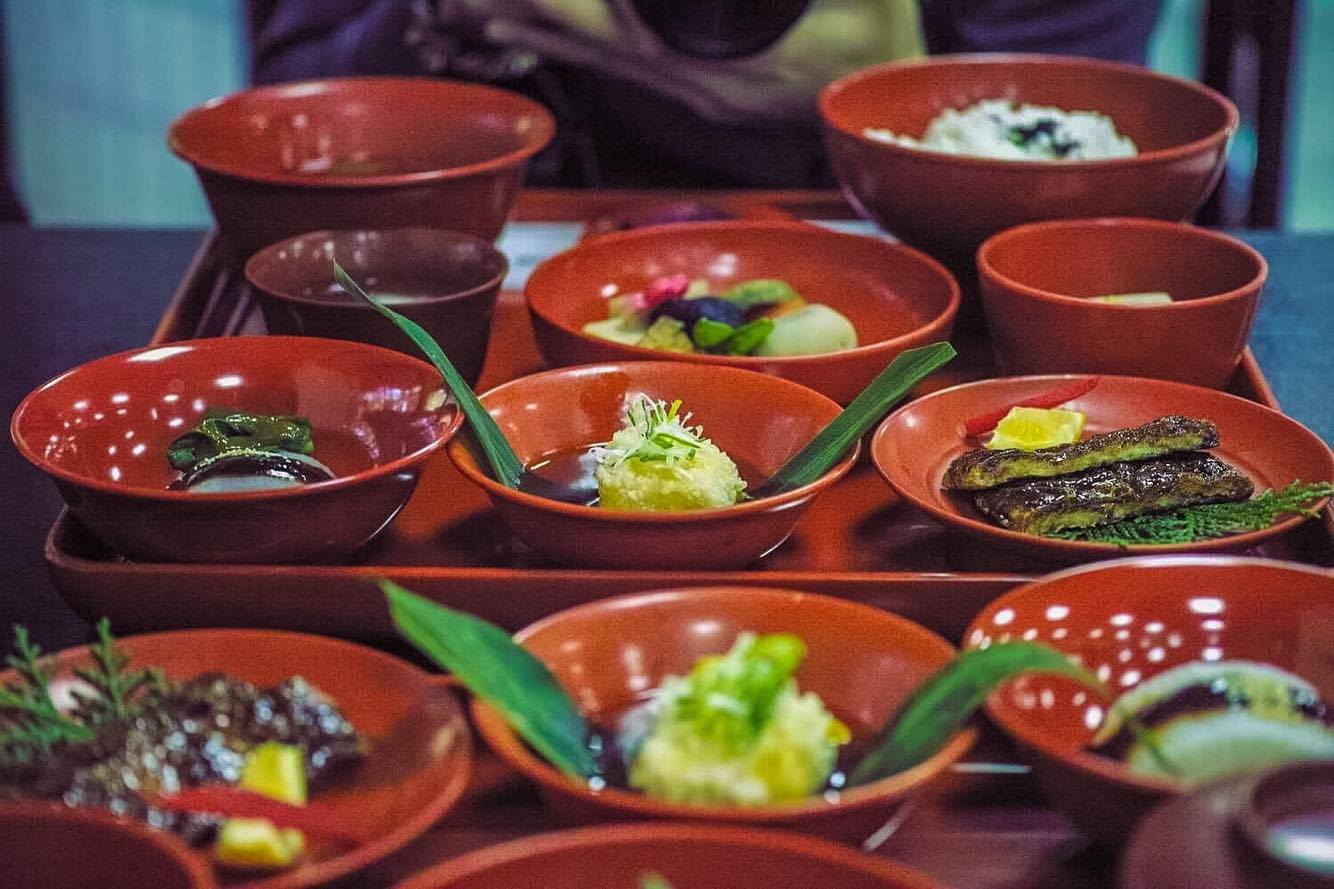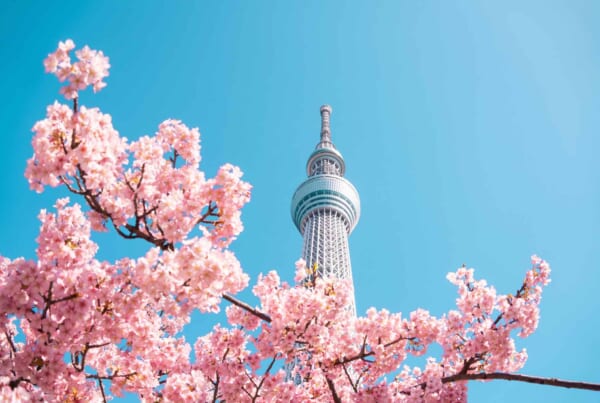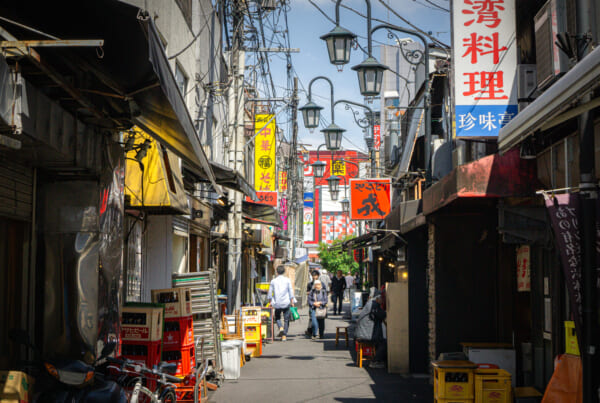Located in Hamamatsu (near Inasachō Okuyama, Kita-ku), Okuyama Houkoujito is the head temple of the Houkouji Buddhist Zen sect. This temple offers a taste of Shoujin ryouri cuisine (fine vegetarian cooking of Zen Buddhism) and lessons of Shakyo (transcription of a sutra). While I was visiting Shizuoka Prefecture, I did not want to miss out on this experience!
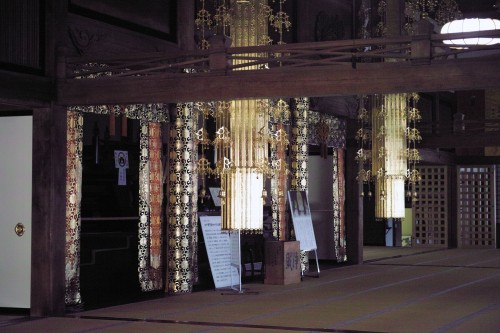
Okuyama Houkouji Temple
In 1371, during the Kentoku era, Mumongensenzenji, son of Emperor Godaigo, ordered the construction of this Zen temple on a 60-hectare site. Numerous buildings and a three-story pagoda form the temple facility.
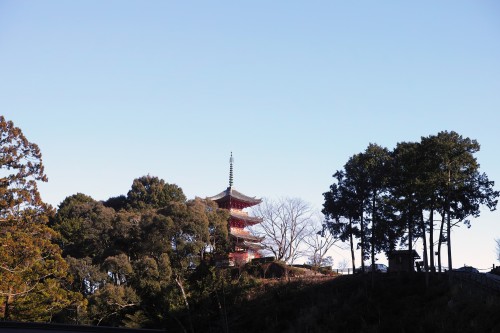
When Mumongensenzenji returned from one of his many pilgrimages across China, his ship capsized and almost sank. Barely escaping with his life, he explained that the power of Hansōbō (a protective spirit) helped him to survive and avoid disaster. Since then, the Japanese people come from all over the country to pray for protection at Okuyama Houkouji temple. In its terrestrial form, Hansōbō is also known to offer protection against fire, and every year (in February) a large matsuri is organized for the protection of lives against fires.
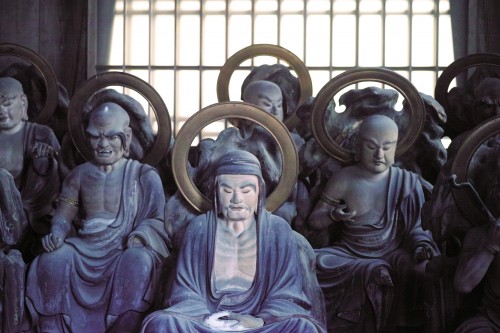
If you drive here, you can park at the foot of the pagoda and head down the stairs to reach the main entrance of the temple, where admission costs ¥400. Once inside, a red bridge will lead you to a sacred statue. There are more than 500 stone arhat statues spread all around the valley to welcome visitors.
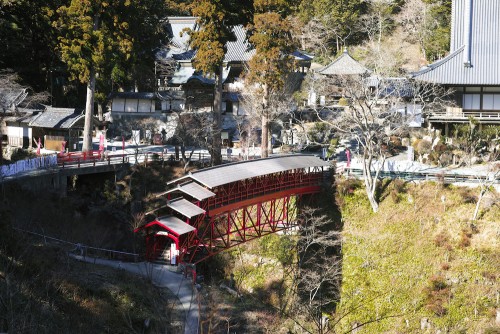
Shoujin ryouri
Prayer
I arrived at the temple around 1pm and went directly to the refectory for lunch. Beyond the exclusion of the consumption of animal flesh, Buddhist vegetarianism has precise philosophical and historical foundations. A monk explained to me that Buddhism believes that all beings have the fundamental right to exist and not to suffer. I loved the idea. Before eating, we read the prayer below, written in Romaji and translated into English.
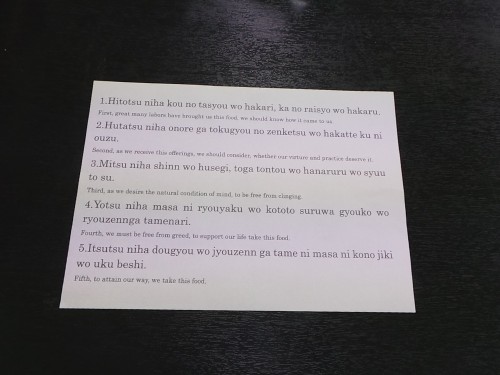
Tasting
Even without meat and fish, the dishes are delicious and very tasty! Prepared with fresh seasonal ingredients, you will find perfectly seasoned vegetables, fried tofu skin, daikon (between radish and turnip) boiled in soy sauce, tofu with sesame, mochi (rice paste), rice and miso soup. But the specialty of this temple is the vegetarian unagi (eel): a very fine imitation of grilled eel made from potato, tofu and nori (seaweed).
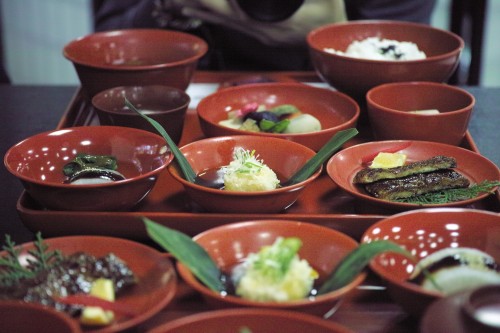
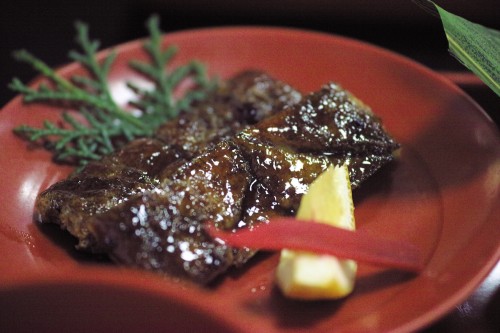
Vegetarian eel
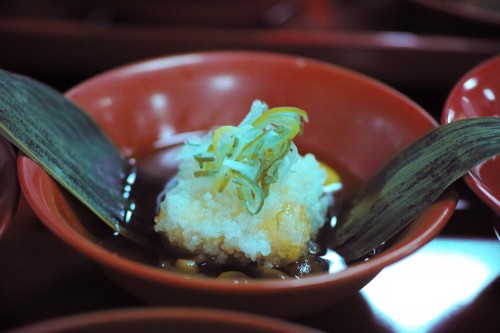
Tempura of fried tofu skin
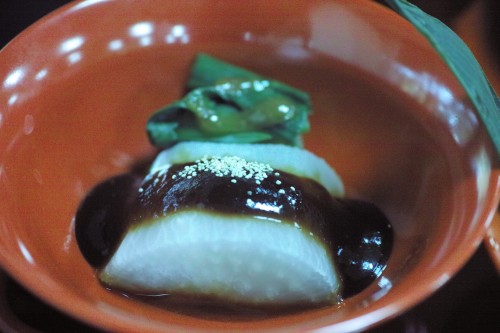
Boiled daikon with soy sauce
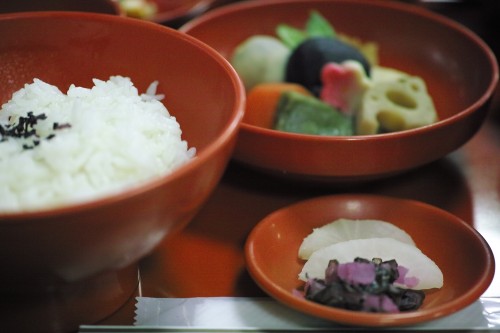
Rice, vegetables and pickles.
Shakyo
In a large tatami mat room, a monk was waiting for us. He lit incense and invited us to sit cross-legged on a cushion facing a table with sheets of paper and felt pens.
The idea of Shakyo is to learn to rest your mind by copying each of the characters of the sutra written on the sheet. Before you begin, the monk explains the message of the sutra. He then sings the sutra both before and after the transcription.
Our sutra dealt with simplicity—how to get away from envy and rest your mind.
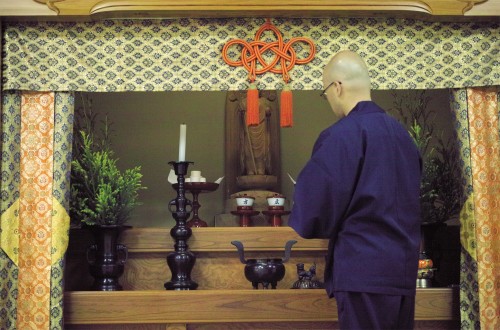
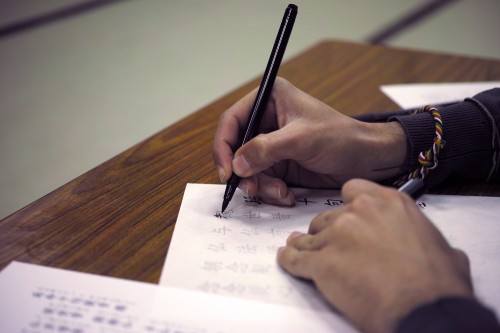
Shakyo is actually a form of meditation. By concentrating on this task, we leave the concerns of daily life aside. If you can read Japanese, you can meditate on the message conveyed by the sutra, but even just writing the characters is soothing in itself.
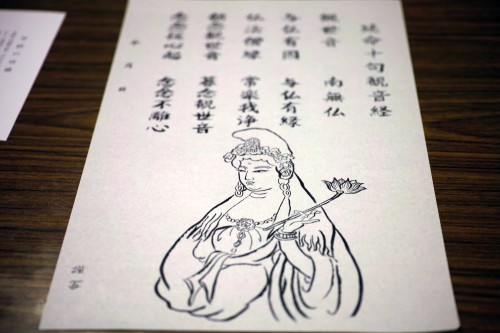
At the end, you can choose to leave the sutra in the temple or take it home with you. I would allow around 1 hour for the experience.
Information
Reservation
To have lunch at the temple (Shoujin ryouri) or to attend the calligraphy workshop (Shakyo), you just have to send an email (in Japanese or in English) to the following address: info@inhamamatsu.com. Give your name, the date and time of your visit and the number of participants. If you do not speak Japanese, please specify it in your e-mail.
How to get there
By public transportation:
Take the bus to “Okuyama City Okuyama” (Shiyakusho Okuyama) from Hamamatsu Station (bus stop n°15) and get off at “Okuyama” stop. The ride will take around an hour, and then you will be just a 10 minute walk to the temple.
By car:
Take the exit “Shin-tomei Expressway Hamamatsu I.C” and drive 10 minutes to the temple.


